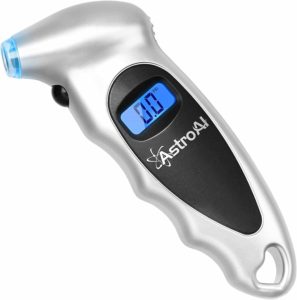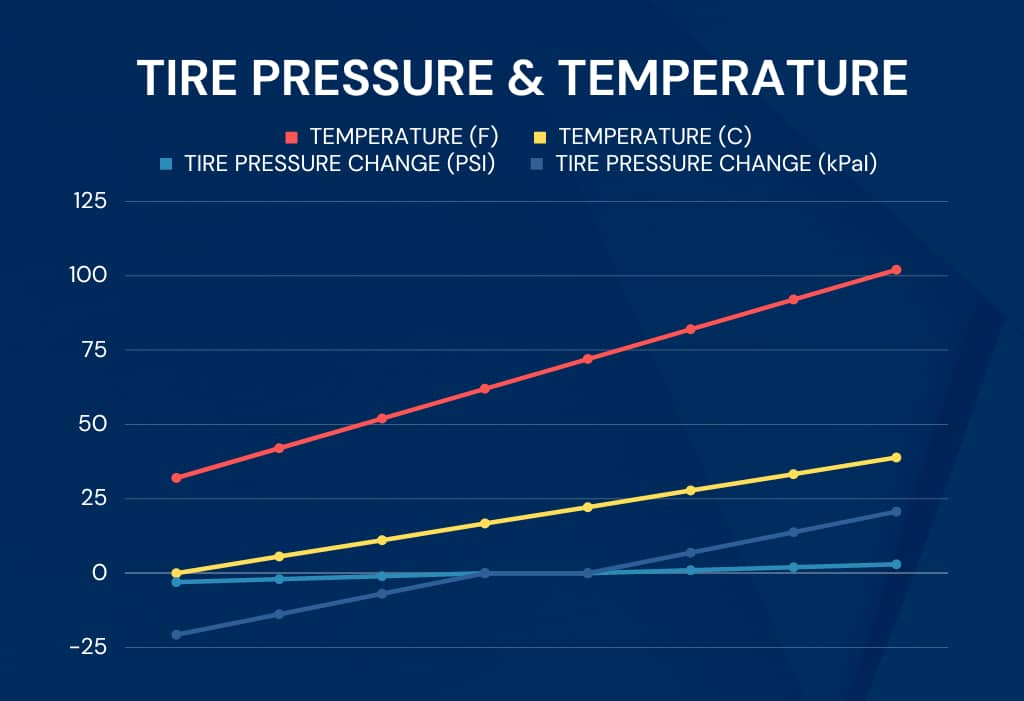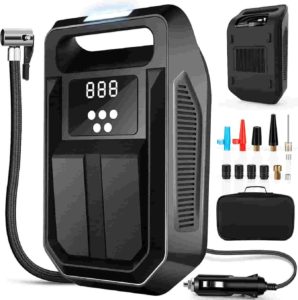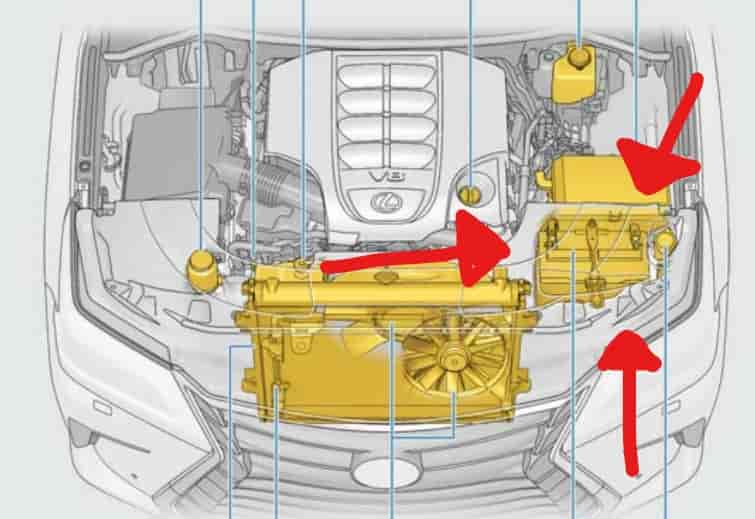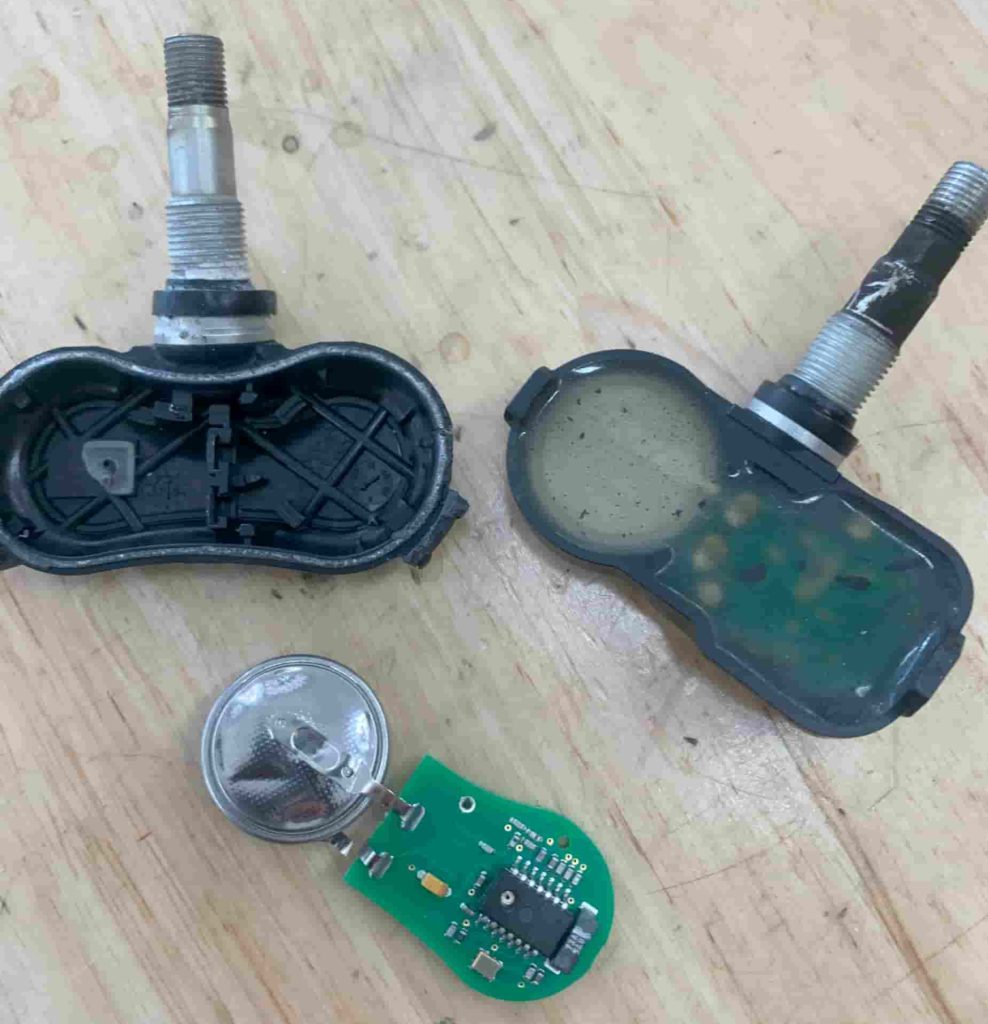The Importance of the Tire Pressure Monitoring System
Buckle up and prepare for an inside look at the Tire Pressure Monitoring System (TPMS) of a Lexus LX—a critical safety feature that seamlessly checks the pressure of all four tires in real-time. Mismanaged tire pressure can spawn a series of issues, from reduced fuel efficiency and compromised handling to catastrophic tire failure. The TPMS is the hidden guardian of your vehicle’s performance and is an unsung hero in your day-to-day driving experience. Let’s delve into the fascinating mechanics of the Lexus LX TPMS and understand its critical role in maintaining your vehicle’s optimum performance.
How Does the Lexus LX TPMS Work?
The Lexus LX, like many modern vehicles, is equipped with a Tire Pressure Monitoring System (TPMS) that is designed to help drivers maintain optimal tire pressure for the best performance, safety, and fuel efficiency. This system uses a series of sensors and computer algorithms to monitor the air pressure in each tire and to alert the driver if the pressure in one or more tires drops below the recommended level. Here’s a more detailed explanation of how the TPMS in a Lexus LX operates:
Tire Pressure Sensors
Every wheel on the Lexus LX has a tire pressure sensor fitted directly into the valve stem. These sensors are battery-powered devices that continuously monitor the air pressure within each tire. They also record the temperature inside the tire as temperature fluctuations can affect tire pressure.
Data Transmission
These sensors communicate wirelessly with the car’s Electronic Control Unit (ECU). Each sensor transmits pressure data at regular intervals (typically every few minutes, or more frequently if a rapid pressure change is detected) using a unique ID code. This way, the system knows exactly which tire each reading came from.
Data Interpretation
The ECU processes the information received from each sensor. If the system determines that the pressure in one or more of the tires is below or above the Lexus recommended range (usually about 25% below the recommended pressure), it triggers a warning.
Driver Notification
When an issue is detected, the TPMS will activate a warning light on the dashboard in the shape of a yellow exclamation point inside a tire cross-section (known as the TPMS symbol). On many Lexus LX models, the Multi-Information Display (MID) will also indicate which tire is underinflated, helping drivers or mechanics locate the issue quickly. In addition to a visual alert, some Lexus LX models also provide an audible alert to ensure the driver is aware of the issue.
Response to Warning
Once the driver sees the warning, they should inflate the tires to the recommended pressure as soon as possible.
System Reset
After addressing the tire pressure issue, the TPMS needs to be reset. Follow the reset procedure below to reset your tire pressure monitoring system.
The Lexus LX’s TPMS is an advanced system that provides valuable information to help maintain optimal vehicle performance and safety. However, it is not a substitute for regular manual tire pressure checks and maintenance, as the system might not immediately detect slow pressure leaks or uneven tire wear. As always, maintaining good tire pressure is an essential part of car maintenance and safety.
Understanding Tire Pressure
How to Check Tire Pressure
Make sure the tires are cold. If your vehicle has been driven, wait at least three hours before checking the tire pressure.
Remove the valve cap from the tire.
Press the tip of the tire pressure gauge onto the valve and read the pressure.
If the tire pressure is below the recommended level, fill the tire with air until the recommended Psi is reached. If the tire pressure is above the recommended pressure, release air until it’s correct.(Press the metal stem in the center of the tire valve to let air out. You can use any object like a screwdriver to do this. Be gentle.)
After adjusting the tire pressure, don’t forget to put the valve caps back on to prevent leaks and keep dirt and moisture out.
Repeat this process for each tire, including the spare if applicable.
2024 Lexus LX Tire Size and Pressure
TIRE SIZE | FRONT PSI | REAR PSI |
285/50R20 | 33 | 33 |
275/50R21 | 33 | 33 |
SPARE | 33 | 33’ |
If you are towing a trailer, add an extra 2 PSI for 20” wheels and add an extra 6 PSI for the 21” wheels.
What is "Cold Tire Pressure"?
Cold tire pressure is the tire pressure reading taken when the tires are at ambient temperature, typically after your Lexus LX has been stationary for at least three hours or has been driven less than a mile. This is the most accurate way to gauge tire pressure because the heat generated from driving causes the air within the tires to expand, which can lead to a falsely high pressure reading. The Lexus LX owner’s manual or the placard on the driver-side door jamb provides the recommended cold tire pressure values, usually expressed in pounds per square inch (PSI), which is crucial for optimal vehicle performance.
How Does the Weather Affect Tire Pressure?
The weather can significantly impact the tire pressure in your Lexus LX, or any vehicle for that matter. As a general rule, for every 10 degrees Fahrenheit change in air temperature, tire pressure will adjust by about 1 PSI. During colder months as temperatures drop you may notice a decrease in tire pressure because the air inside the tires contracts, causing the pressure to drop. On the other hand, in warmer weather the air inside the tires expands, which can lead to increased pressure. Both underinflation and overinflation can negatively affect tire performance, wear, and safety. Therefore, it’s crucial to regularly check and adjust your tire pressure especially when there are significant changes in weather conditions.
TPMS Warning Signals and Safety Considerations
What Causes the Lexus LX Tire Pressure Light to come On?
Seasonal temperature changes: A drop in ambient temperature can cause tire pressure to decrease, triggering the warning light.
Spare tire: The spare tire on the Lexus LX is a full size spare that has its own tire pressure sensor. This means that if your spare tire is low on air (even not installed on the car) the tire light will come on.
Tire puncture or leak: A sharp object or road debris like a nail or screw may puncture a tire, causing air loss which will of course activate the warning light.
Faulty tire pressure sensor: Damaged or malfunctioning sensors may provide inaccurate readings, resulting in a false alert. The only way to determine which sensor is faulty is to scan each sensor with a TPMS diagnostic tool.
Valve stem issues: A damaged or leaking valve stem can lead to gradual pressure loss and eventual activation of the tire pressure light. They make kits to replace the rubber gasket that usually goes bad.
Tire damage: Impact from potholes or hitting a curb can cause structural damage like tire bubbles, leading to pressure loss.
Sensor battery life: TPMS sensors are battery-powered, and over time, batteries die. (they usually last anywhere from 5-10 years) This will cause the tire pressure light to turn on and flash.
Recent tire rotation or replacement: If the tires have been recently rotated or replaced, the TPMS may need recalibration to avoid false alerts. The vehicle’s computer may think the front tires are in the rear and rear in the front after a rotation.
Wheel issues: Damaged, corroded, or cracked wheels can lead to air leaks and pressure loss. This is very common with low profile tires.
Altitude changes: Climbing or descending in elevation can affect tire air pressure and trigger the TPMS warning. An additional 1.5 Psi per Km above sea level is required.
Natural pressure loss: Tires lose air pressure over time due to temperature changes and permeation. Tire dry-rot will happen to tires that sit.
Electrical problems or software issues within the car’s TPMS system. Occasionally the system may have a software update from Lexus.
Snow Tires: If you have a separate pair of wheels for your snow tires, you can either transfer the sensors from your summer wheels or acquire an additional set of 4 sensors for the second pair of wheels. However, if you are using the same wheels for both sets of tires, there is no need to be concerned about this.
Is it Safe to Drive With the Tire Light On?
We strongly recommend not to drive if the tire pressure warning light is activated, as it may compromise your safety. It’s crucial to investigate and identify the root cause. Is the tire punctured by a nail or a screw? Is air escaping due to a faulty bead seal? Is the tire deflating rapidly or gradually? Understanding the exact problem is the only approach to determine if it’s truly safe to continue driving with the tire warning light activated, and for what duration. This underlines the importance of carrying a portable tire inflator in your vehicle.
What are the Impacts of Driving With Under or Overinflated Tires?
Driving your Lexus LX with underinflated or overinflated tires can result in several adverse consequences:
Compromised Fuel Efficiency: Both underinflated and overinflated tires affect the vehicle’s fuel economy. Underinflated tires increase rolling resistance, making the engine work harder, whereas overinflated tires reduce the tire’s contact area with the road, leading to inefficient fuel consumption.
Poor Vehicle Handling: Whether underinflated, which affects the car’s responsiveness and steering, or overinflated, which reduces road traction, improper tire pressure can negatively impact overall vehicle handling.
Increased Tire Wear: Both conditions can lead to premature and uneven tire wear. Underinflated tires tend to wear out more on the edges of the tread, while overinflation causes increased wear in the tire’s center.
Higher Risk of Damage and Blowouts: Underinflated tires can overheat due to increased friction with the road, increasing the risk of a blowout. Overinflated tires are harder and less flexible and more susceptible to impact damage. They also have a heightened risk of bursting. Both under and overinflation make the tire more prone to damage from road hazards like potholes or sharp objects.
Reduced Comfort: Overinflated tires can’t absorb road shocks as effectively, leading to a harsher, less comfortable ride.
Resetting and Troubleshooting the TPMS
Lexus LX Tire Pressure Light Reset Procedure
Adjust the tire pressure to the recommended pressures. 33 PSI in the front, rear and spare tires.
Stop the vehicle, put it in Park and switch the ignition to the ON Position. (engine off, press the push start button twice without your foot on the brake)
Using the arrow buttons on the right side of the steering wheel, scroll over and select the gear icon. (Vehicle Settings)
Scroll down using the down arrows on the steering wheel and select TPMS or TPWS.
Hold down the OK button on the steering wheel on “Set Pressure” until the tire pressure light blinks 3 times.
Release the button after the tire light has finished blinking.
Drive the Lexus LX for 15 minutes or more at 25 mph or more or until the PSI of each tire is displayed on the information display.
Older Lexus LX Tire Light Reset Procedure
If your Lexus LX doesn’t have the TPMS or TPWS setting on the information display, check under your steering wheel for the reset button.
Find a safe location and park your vehicle. Turn off the engine.
Don’t move the vehicle during this process.
Adjust the tire pressure to the recommended level
Remember, the tire pressure warning system uses this pressure level to function.
Turn on the engine but don’t start it (IGNITION ON, engine off mode).
Press and hold the tire pressure warning reset switch until the warning light blinks three times slowly.
The display will show “–” for each tire’s pressure while the system figures out each tire’s position.
Once the system knows each tire’s position, it will show the pressure for each tire on the display.
Drive your vehicle at a speed of about 25 mph (40 km/h) for around 10 minutes.
After this, the display will show each tire’s pressure, indicating the process is complete.
If the vehicle is stopped for a long time (like at traffic signals), the process might take longer than 10 minutes.
When Should You Reset the Tire Pressure Light?
After Tire Rotation
After Changing a Flat Tire
After Inflation or Deflation
After Replacing a Tire Sensor
After Purchasing New Tires
After Tire Alignments or Balances
What Tools Do You Need to Reset the Lexus LX TPMS?
To reset the Tire Pressure Monitoring System (TPMS) on the Lexus LX, the only equipment you need is a reliable air pressure gauge, as the reset function is integrated into the vehicle’s system. Additional tools become necessary only when there are issues with the tire pressure system that need diagnosis. For instance, in the event of a tire pressure sensor replacement or a TPMS malfunction, a TPMS diagnostic/relearning tool would be essential to calibrate the new sensor or to pinpoint the problematic tire sensor.
Resetting the Lexus LX ECU
If all other attempts have been unsuccessful and the tire warning light won’t go off, it might be necessary to reset the Lexus LX’s computer system. This can be done by disconnecting the main 12 volt battery. To prevent any possible short-circuits, start by disconnecting the negative terminal. A 10 or 12mm wrench or socket will be required to loosen the nut on the terminal. By disconnecting the battery, the power supply to the Engine Control Unit (ECU) is interrupted, which erases all accumulated error codes, including the one causing the tire pressure warning light to activate. This action also resets the computer’s adaptive memory settings. After reconnecting the battery, your Lexus LX will enter a “relearning” phase where it recalibrates all its sensors and actuators. To finalize this relearn phase, drive at a speed of 50 Mph for a duration of 30 minutes or more.
What is the TPMS Malfunction Indicator?
Your Lexus LX also has a special warning light to alert you to potential issues with your tire pressure monitoring system (TPMS). It’s called the TPMS malfunction indicator. This warning light uses the same yellow exclamation point as the standard tire pressure warning light. If there is a problem with the TPMS, the light will flash for approximately one minute before staying on. This sequence will occur every time you start your car until the issue is resolved. When your tire light is flashing, the system may not be able to accurately detect low air pressure. Basically, a blinking tire pressure light typically signals a malfunction within the TPMS itself, rather than an actual tire pressure concern.
What Can Cause a TPMS Malfunction?
Using non Lexus wheels or tires.
Certain electronic devices that transmit radio waves can interfere with the TPMS’s ability to monitor the tire pressure.
Tire Chains: The installation of chains on the tires for snow can cause a TPMS malfunction.
If wheels without tire pressure sensors are installed on the car.
In case your Lexus LX has been outfitted with dark window tints, they could potentially interfere with the radio signal transmission between the Tire Pressure Monitoring System (TPMS) sensors and the receiver.
If there is a lot of ice or snow on or around the tire valves.
If the tire pressure is extremely high.
If the Lexus LX receiver module/ECU does not recognize new tire pressure sensors installed.
Tire Leaks and Solutions
How to Find the Source of a Tire Leak
To find out where your tire might be leaking from, start by checking if any of your tires have less air in them than they should. Fill up the tire with air, because this trick won’t work if the tire is totally flat. Then, get a spray bottle filled with soapy water (you can also use Windex). Spray this all over the tire. Make sure the entire tire is soaked completely. Look closely at the place where the tire attaches to the wheel (we call this the “bead”) and the place where you put air in the tire (this is called the “valve stem”). Again, make sure the whole tire is wet with the soapy water. After waiting a bit, look at the tire very carefully for any tiny bubbles. Check both the outside and the inside of the tire. If your tire has a leak, the air coming out will make little bubbles where you sprayed the soapy water. Be patient and look very carefully – if your tire is going flat, there’s a leak somewhere!
Are Tire Plugs Safe?
Certainly! Drawing from my personal experience of using tire plugs to repair a multitude of tires, I can attest to their dependability. Tire plugs provide a reliable solution for repairing punctures in the tire’s tread area. They are specifically engineered to fit directly into the puncture created by objects like nails or screws, effectively sealing the hole and preventing air leakage. (Remember to first remove the object that caused the hole.) Tire plugs are made from durable, rubber-like substances and are made to withstand the harsh conditions inside a tire, including significant changes in air pressure and temperature. If installed correctly, a tire plug can remain effective for the entire lifespan of the tire without needing replacement. However, tire plugs are not meant for repairing the tire’s sidewall.
Are Tire Sealants Safe?
While tire sealants can offer a quick fix for a flat tire on your Lexus LX during emergencies, they’re not meant for long-term use. These products can potentially harm your tire pressure sensors as the sealant fluid might block or interfere with electronic boards within the sensors casing. Additionally, tire sealants can cause damage to the tire itself, making it impossible to repair afterward.They can also disrupt the tire’s balance, resulting in vibrations when you drive. Keep in mind, you’re essentially injecting liquid into the tire. As a general guideline, it’s better to avoid using tire sealants unless you absolutely have to. If you do end up using a sealant, make it a point to visit a tire repair shop as soon as possible for a proper fix!
Advanced TPMS Topics
How to Install and Calibrate New TPMS Sensors
First, the wheel of the Lexus LX must be removed from the car and then the tire needs to be removed from the wheel to access the sensor. Typically, the base of the old sensor is loosened with a screw and taken out, and then the valve stem is pulled out through the top of the wheel with a valve remover tool. Once the old sensor is removed, the new one can be installed. (It’s a good idea to take a picture of each new sensor’s ID number before installation, as these numbers will be needed later) Make sure your new sensor is compatible with the Lexus LX’s Tire Pressure Monitoring System (TPMS) module. To install the new sensor, use a tire valve removal tool to pull the valve through the valve hole in the wheel. After the new sensor is fitted and the tire is mounted back on the wheel, the new sensor needs to be synced with the Lexus LX’s Electronic Control Unit (ECU). This is known as the TPMS “relearning” process. During this process the ECU is programmed with the new sensor’s unique ID number, so it can receive signals from the new sensor. A TPMS relearning tool is needed for this step. Each tire pressure sensor has to be scanned and then the tool needs to be synced with the car’s ECU. This is done by connecting the TPMS tool to the Lexus LX’s OBD port under the steering wheel.
Tire Pressure Sensor Batteries
Tire pressure sensor batteries are integral components of the tire pressure monitoring system. These sensors are powered by small, sealed batteries. They look similar to wrist watch batteries. The primary function of these batteries is to provide the energy necessary for the sensors to monitor tire pressure continuously and transmit this data to the vehicle’s onboard computer system. The lifespan of the batteries typically ranges from 5 to 10 years depending on usage and driving conditions. Once depleted the entire sensor unit needs to be replaced, as the batteries are non-replaceable and attached to the circuit board of the sensor. It’s important to note that when a sensor’s battery life is nearing its end, the TPMS warning light will illuminate on the dashboard and flash.
TPMS Legal Considerations
Are TPMS Sensors Legally Required?
In numerous regions worldwide, such as the United States and Europe, the utilization of tire pressure monitoring system (TPMS) sensors in vehicles is mandated by law. In the U.S., the TREAD Act of 2000 necessitates that all vehicles manufactured after September 2007 must be equipped with a TPMS. This law primarily targets vehicle manufacturers, aiming to enhance road safety by alerting drivers to significant changes in their tire pressure. Similarly, European regulations implemented from November 2012 onward require all newly produced passenger vehicles to be fitted with a TPMS. The primary objective of these regulations is to prevent accidents caused by tire failures.
Will My Lexus LX Pass State Inspection With the Tire Pressure Light On?
Yes. In certain states, the tire pressure monitoring system is inspected during a vehicle’s safety examination, but the specific requirements can vary. For example, in New York, the tire pressure light is assessed as part of the inspection process, but it is not a cause for failure. In Texas, the TPMS is checked during the safety inspection but you will not be failed if it isn’t working correctly. I am personally a licensed New Jersey state inspector and in NJ having a functional TPMS in a passenger vehicle is not a requirement. If the tire pressure light is on the vehicle will still pass inspection. Commercial vehicles are a different story because they still require “safety inspections”. (commercial vehicles can be identified by their license plates)The lack of uniformity between states means it is recommended to check with your local Department of Motor Vehicles or other relevant state agencies for the most accurate and up-to-date information.
Conclusion
Understanding the complex dynamics of the Lexus LX Tire Pressure Monitoring System (TPMS) certainly helps you navigate the journey of car ownership more effectively. It’s a crucial piece of technology that significantly influences vehicle safety and performance. This detailed exploration of the system’s operation equips you to not only tackle issues head-on but also appreciate the intricate mechanics working behind the scenes to ensure your driving experience remains smooth and secure. As we draw the curtain on this enlightening exploration, remember that maintaining correct tire pressure is vital, and your Lexus LX is engineered to make this task as seamless as possible. Safe and happy driving! This article is applicable to all Lexus LX models including the 2024 Lexus LX600, LX600 Premium, LX 600 F Sport Handling, LX 600 Luxury, LX 600 Ultra Luxury.

